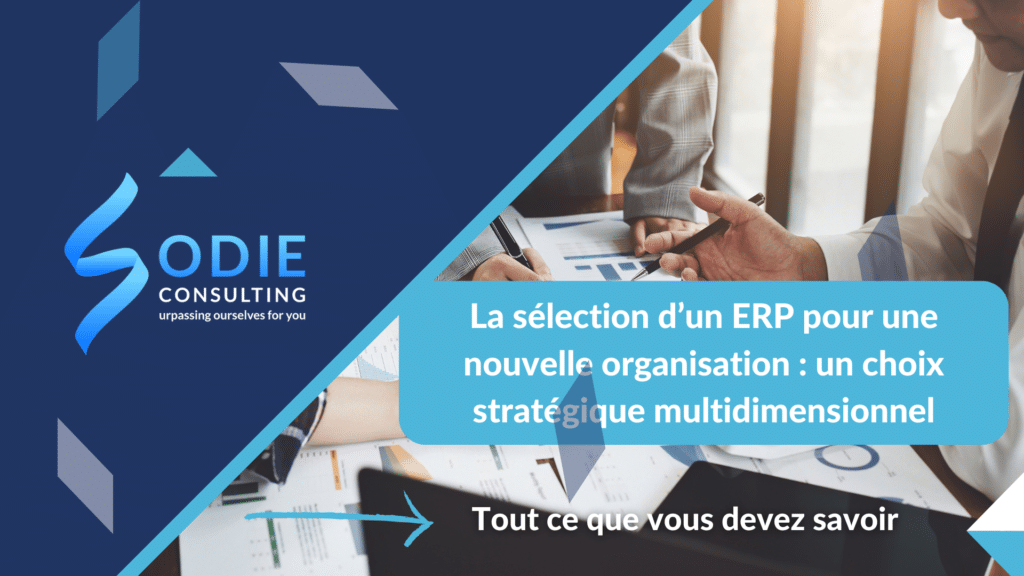The selection of an ERP for a new organization: a multidimensional strategic choice

Selecting an ERP (Enterprise Resource Planning) system for a new organization is a crucial strategic decision that must meet the varied needs of all stakeholders involved.
This article guides novices through the essential steps of this complex process, emphasizing the importance of a structured and well-advised approach.
Understanding multiple needs
When the finance department selects an ERP, it often prioritizes reporting and dashboard functionalities. However, these choices may not fully meet the operational requirements of various departments within the organization, which require a flexible, user-friendly, and customizable tool.
Similarly, the involvement of the IT department is crucial not only for integrating the ERP into the organization’s technological environment but also to ensure its maintainability and security against external intrusions.
Defining prerequisites and writing the specifications
Writing a precise specifications document is an essential prerequisite. This document must clearly define the needs of all internal stakeholders to avoid overly specific orientation towards a single domain like finance or IT.
This specifications document will serve as the basis for evaluating the various ERP vendor proposals.
Choosing the deployment model: on-Premise or cloud
The choice between an on-premise solution and a cloud-hosted solution involves significant advantages and disadvantages.
On-premise solutions offer total control and more extensive customization, while cloud solutions promise reduced initial costs and increased flexibility.
License costs and maintenance terms should also be considered in this decision.
Selecting partners and validation by POC
After defining the specifications, it is essential to contact targeted partners. They must demonstrate how their solution meets the requirements, either directly as standard or through specific adaptations.
A Proof of Concept (POC) is often used by vendors and integrators to demonstrate the suitability of their solution to the expressed needs.
Regulatory compliance and product evolution
It is crucial to choose a vendor capable of keeping up with regulatory changes, such as digitalization, and updating their solution without disrupting existing systems.
The annual cost of the solution, aside from additional requests, should also be accurately assessed.
Final choice and role of a neutral intermediary
The final phase of ERP selection requires gathering all key stakeholders to make an informed decision.
The use of a neutral intermediary, such as an experienced ERP consultant, is recommended to organize and guide the various steps.
This consultant will play a crucial role not only in choosing the solution but also in supporting its implementation, acting as a Business Analyst or Project Manager.
Conclusion
Selecting an appropriate ERP system is a complex process that requires deep expertise and understanding of the multidimensional needs of an organization.
Just because you have the recipe doesn’t make you an expert; contact us to assist you!
Ensuring the success of your ERP project requires more than just selecting features; it involves understanding and integrating the needs of all stakeholders to achieve a solution that will support the organization in its future challenges.
